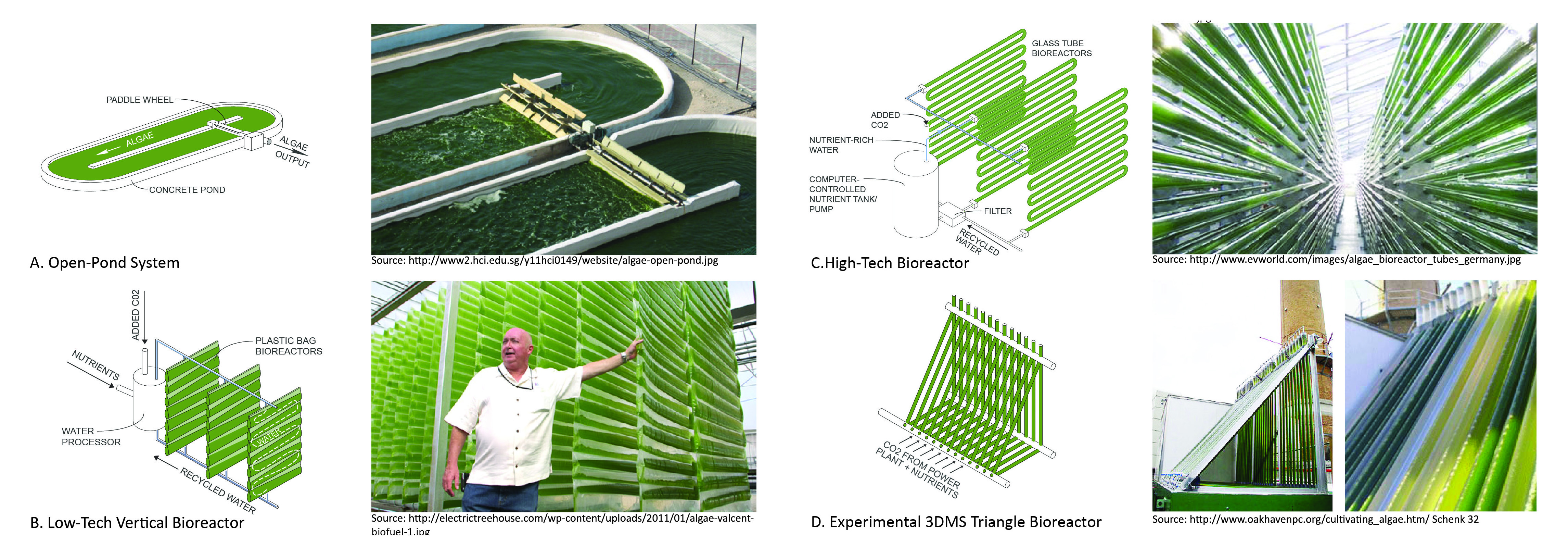December 4, 2013
Growing Sustainability – Integrating Algae Cultivation into the Built Environment
Abstract
Designers are expanding the definition of Sustainable Design by incorporating biological processes and systems directly in their projects. Systems like green roofs and living machines have proved themselves invaluable for reducing a project’s overall environmental footprint. More recently, advanced algae cultivation technologies – some still in the testing phase – inspire architects and designers. With its efficient energy production and potential for improving the health of the environment, algae cultivation is the next photosynthetically driven system primed for architectural integration. This paper examines the various methods of algae farming, their roles in cyclical systems, their design implications, and their potential for integration into urban space. Algae can effectively sequester carbon dioxide and treat wastewater while increasing its growth efficiency. These properties give it great potential for integration with other infrastructural systems. Synergies can be developed into closed-loop systems within the built environment, resulting in lower CO2 emissions, O2 production, nutrient reuse and efficient energy generation. These multi-layered benefits of algae cultivation have strong potential for sustainability methods to utilize algae-integrated systems. Algae’s high ecological performance generates a multi-fold contribution towards improving the health of the environment. With its combination of carbon neutral energy production and recycling of environmental pollutants, the integration of algae cultivation into the built environment opens a new dimension in sustainability design.

